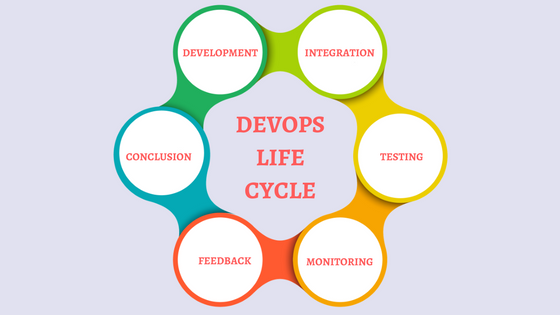While many companies want to implement DevOps lifecycle, they rarely have an understanding of all the peculiarities and steps of the process. Experienced system administrators might want to get more knowledge and understanding of the way DevOps works and how it can be beneficial to their IT operations. As a DevOps services provider devops services with more than 5 years of experience delivering DevOps solutions, we have a pretty decent understanding of a project lifecycle in DevOps — and we can share it with you.
DevOps lifecycle phases
The whole DevOps methodology is centered around making your IT infrastructure and workflows as neat and cost-efficient as possible, so DevOps lifecycle phases are structured in such a way as to assess the existing state of IT infrastructure, eliminate all discrepancies and bottlenecks, leverage all room for improvements, ensure the sustainability and security of operations and provide efficient ongoing monitoring and data analytics of your systems.
Thus said, here is the list of DevOps lifecycle phases:

- Analysis of the project goals and requirements. The DevOps team lead or Project Manager discuss the project specs with the customer stakeholders to identify what they WANT and what they NEED to get the expected results. For example, some systems can be transitioned to the cloud through a lift-and-shift approach, while sometimes building a cloud-native analog is the preferable way. This phase also includes establishing the communication tools, reporting frequency and collaboration procedures.
- Assessment of the existing IT infrastructure. DevOps engineers evaluate the systems your business currently uses. They read the available documentation, talk with stakeholders and ask questions, create a detailed mind map of the servers, processes, toolset and practices in use by your team. The resulting scheme helps pinpoint the performance bottlenecks, potential security backdoors and structural issues that currently exist within your IT infrastructure.
- Design and implementation of solutions. When the requirements are clarified and the existing infrastructure is understood, DevOps engineers can devise the ways to overcome the existing limitations, remove the bottlenecks and ensure scalability, security and maintenance efficiency of your new IT infrastructure. Auto-scaling groups, built-in load balancers, database replicas, automated backups and other solutions help optimize the workflows and cost-efficiency of your IT operations.
- Running a pilot project. While many IT outsourcing projects are quite short-term, most companies prefer building long-term partnerships with their Managed Services Providers, and like to evaluate the contract viability through a pilot project. It can be something rather small, like configuring a cloud monitoring solution, or some complicated service, like setting up a Kubernetes cluster, CI.CD pipelines for software development or configuring a Big Data analytics tool for real-time system monitoring.
- Adjusting the scope of work and roadmap based on pilot outcomes. Outcomes of a pilot project help understand if the initial assessment was right or if the roadmap must be updated to better represent the pace and depth of the project. Obviously, the more experienced Managed Services Provider you select to work with, the more projects they have accomplished and the more accurate their estimates will be.
- Performing the main bulk of your IT outsourcing project. Once you get the precise roadmap and clear understanding of the project progress, the preparation is complete and you can begin doing the main bulk of the project you need. This can be the most time-consuming and effort-costing phase of the project — but it is essentially why the project was started in the first place. Developer documentation is also delivered at this stage.
- Establishing the cloud monitoring solutions. Once your new systems are up and running, it’s important to ensure they are running in a most efficient manner. This phase is meant for configuration of backup & restoration, monitoring, alerting, logging, and analytical solutions. This allows either simply ensuring your system are 100% secure and efficient — or going to a much higher level and implementing Big Data analytics to turn your machine-generated data into a goldmine of useful insights.
Conclusions on the DevOps lifecycle phases
Thus said, these 7 DevOps lifecycle phases pretty clearly illustrate the average workflow you experience when working with Managed Services Providers. The particular roadmap can vary depending on the nature of your project, yet the logic remains the same. Analyze the project requirements-assess the current state of the systems-design and implement the improvements needed to ensure infrastructure stability-accomplish the project goals-provide stable monitoring and easy maintenance.

